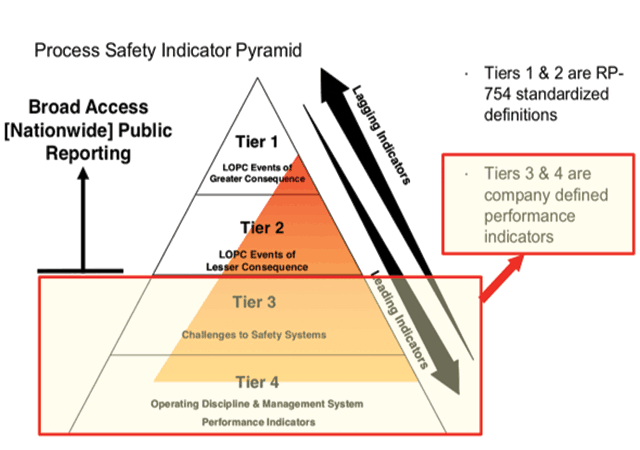API Investigation Tiers and Root Cause Analysis

The American Petroleum Institute formalized a system for incident reporting and investigation that had existed informally for decades. More serious incidents (Tier 1 & 2 above) required a more extensive investigation and reporting while less serious incidents (Tier 3 & 4) were to be defined by the company and investigated as the company saw fit.
This categorization has led to problems.
Companies take the Tier 1 & 2 incidents seriously and require a thorough root cause analysis. However, these accidents rarely occur (hopefully) and are difficult to investigate because of the serious nature of the accident, damage to the scene, simultaneous regulatory investigations, lawsuits, and hyper management attention.
On the other had, precursor events (Tier 3 & 4) are seen as less important. The problems could have caused a more serious accident but they typically aren’t investigated thoroughly and effectively fixed because of haphazard root cause analysis and little management attention.
The few Tier 1 & 2 incidents aren’t enough to drive an effective improvement initiative. The many Tier 3 & 4 investigations produce a raft of ineffective fixes that waste critical time and effort.
What do you think? Is it time for change?
While I understand that not all incidents deserve the same level of investigation, my belief is that more effort needs to be applied to lower level (Tier 3 & 4) incidents to learn from these precursor events.
That’s why we rewrote the TapRooT® Books and developed a full TapRooT® Investigation for serious incidents (Tier 1 & 2) and a faster training and simpler system for lower significance (but still precursor) incidents.
The simple process is just five steps and uses four tools. The process is:

The tools used are:
- SnapCharT® Diagram
- Safeguard Analysis
- Root Cause Tree® Diagram and Dictionary
- Corrective Action Helper® Guide
These are the heart of the TapRooT® System and lead to simple, yet effective investigations and fixes.
Note that for the easiest investigations, after the investigator collects information they can evaluate if further investigation is needed and stop the investigation if their is nothing to learn.
Want to learn to apply this process to Tier 3 or 4 investigation? Attend a 2-Day TapRooT® Root Cause Analysis Course. See our upcoming course locations and dates at this link:
http://www.taproot.com/store/2-Day-Courses/
If you want to use TapRooT® for Their 1 & 2 and Tier 3 & 4 incidents, learn both the complete TapRooT® System and the simple system at one of our 5-Day TapRooT® Advanced Root Cause Analysis Team Leader Courses. See the locations and dates at this link:
http://www.taproot.com/store/5-Day-Courses/
Learn to use the TapRooT® System to improve the investigation of precursor incidents and prevent Tier 1 & 2 accidents from occurring. It’s a much more effective way to stop major accidents than learning from disasters.



